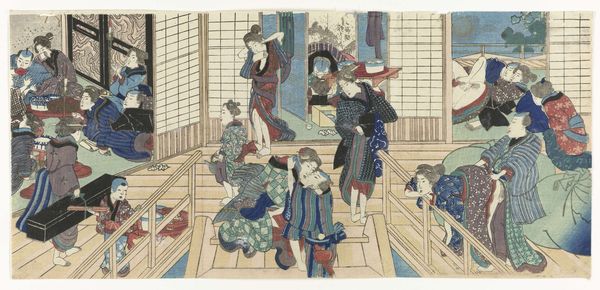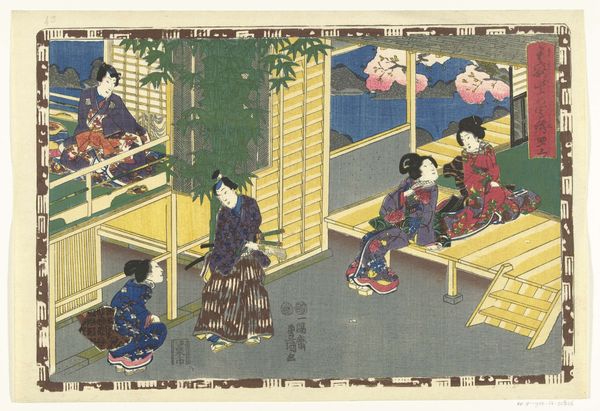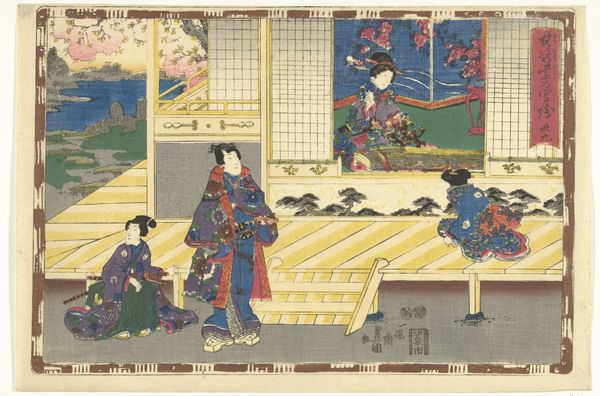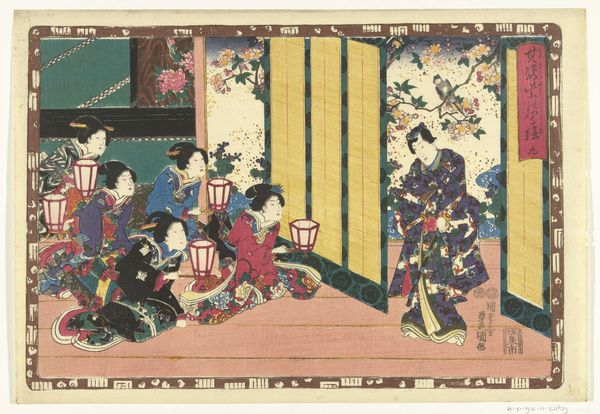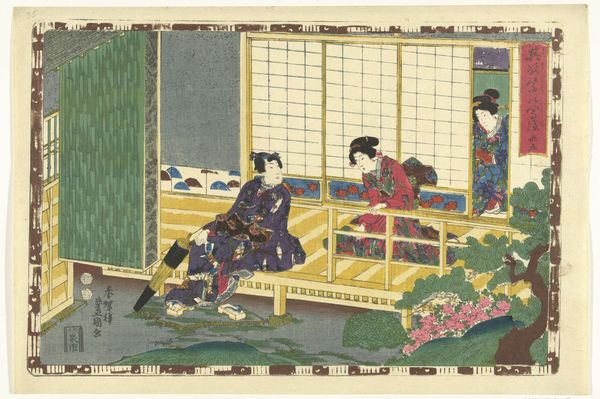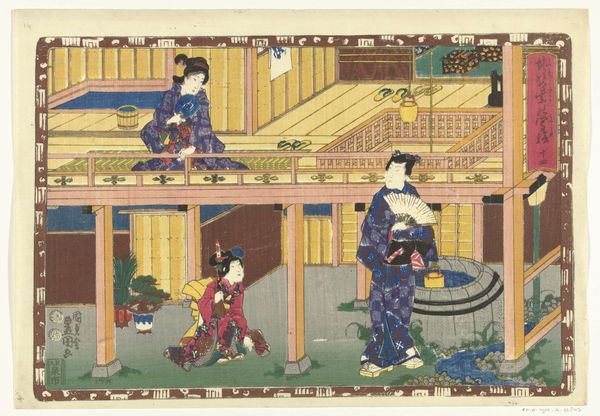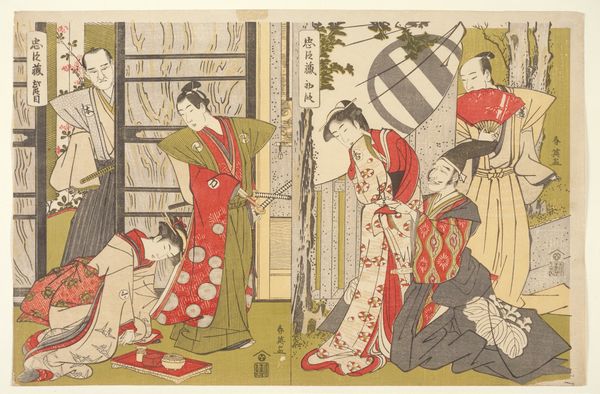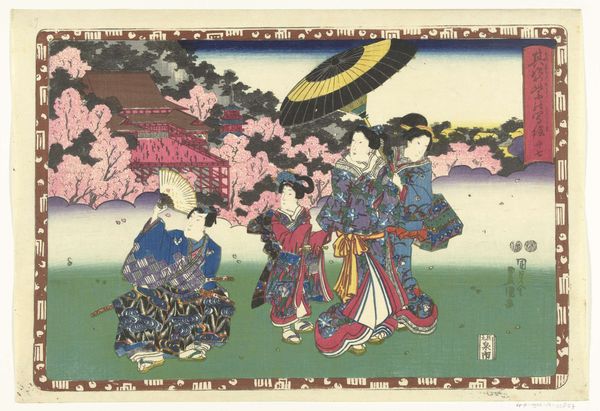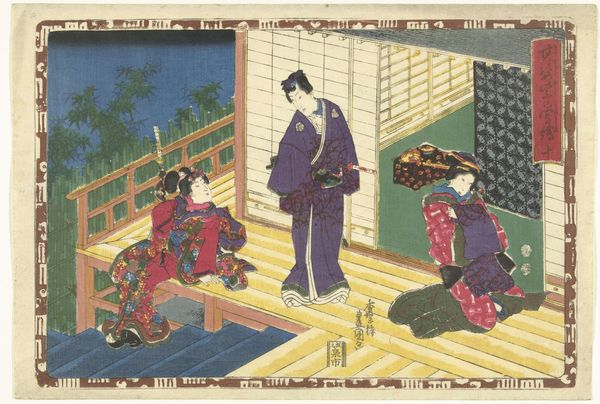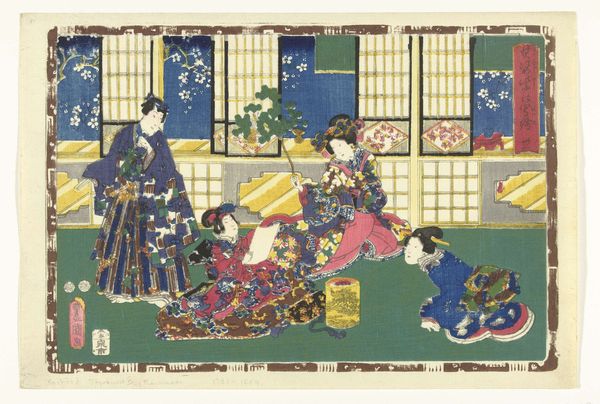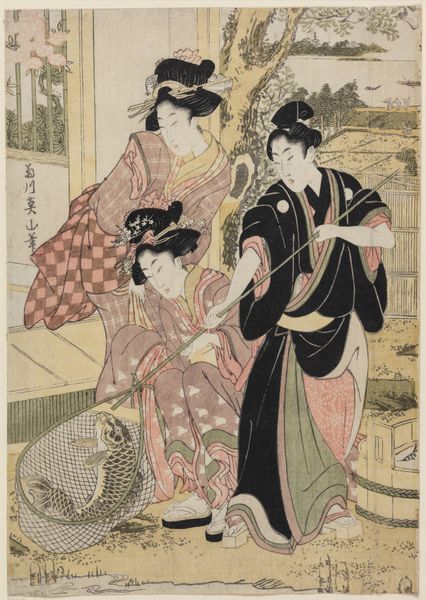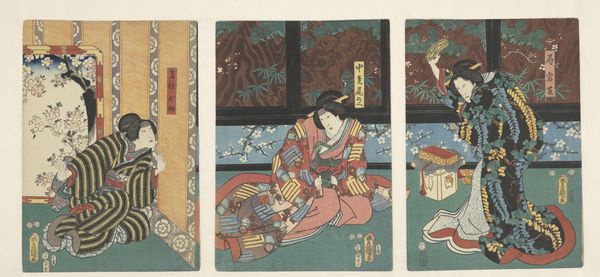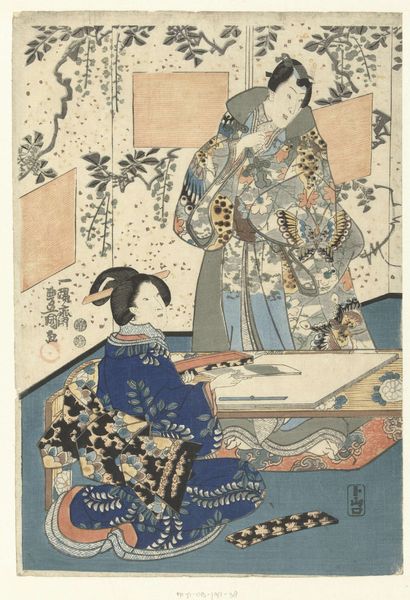
print, woodblock-print
# print
#
asian-art
#
traditional media
#
ukiyo-e
#
figuration
#
woodblock-print
#
watercolour illustration
#
genre-painting
Dimensions: height 252 mm, width 373 mm
Copyright: Rijks Museum: Open Domain
Curator: Let's discuss Utagawa Kunisada's "Chapter 46," created around 1852. The Rijksmuseum holds this stunning example of ukiyo-e woodblock printmaking. The scene offers an intriguing juxtaposition of interior warmth against the chill of winter. Editor: Yes, the contrast immediately struck me. The almost austere lines of the snow-covered landscape and architecture on the exterior meeting the colourful, rich scene occurring through the screen. It has an incredibly clever division. Curator: Indeed. Structurally, the composition divides rather distinctly between the angular exterior and the interior which provides a layered perspective, drawing the eye deeper into the pictorial space through geometric frames. Note how Kunisada employs the visible framework of the building as part of the image plane itself. Editor: Looking beyond the aesthetic, there’s such a fascinating story implied here, isn't there? Snow transforms into an agent of exclusion and interiority. The seated women reading may be a symbolic act as she is surrounded by familial or perhaps sisterly intimacy—which creates a striking emotional resonance with the almost desperate transition taking place by the woman adjusting the head covering outdoors. It is the contrast of shared spaces inside and isolating spaces outside. Curator: The artist's technique does underscore this. Look at how he manipulates line and form to generate distinct textural qualities that separates elements: smooth, flat planes for the screens to sharp etched lines in the snow, but still allowing harmony amongst contrast. Kunisada also guides your eye toward key formal features, the subtle gradations of colour in the garments and the planes of the snow offer textural depth within such rigid lines and structure. Editor: I agree entirely. The iconography resonates profoundly, it's all about the coded spaces of domesticity, and the transitional moment in women's fashion being disrupted by weather is also just a classic scenario so poetically visualised. The symbolic weight seems intentionally complex. Curator: Well, it makes one think about the inherent constraints that structure, material, and form offer – they're all components of Kunisada's vision here and its commentary. Editor: Ultimately, Kunisada's “Chapter 46" provides a lens through which we can examine space, form, and our collective fascination with art. Curator: Precisely. And with social experience – so effectively depicted.
Comments
No comments
Be the first to comment and join the conversation on the ultimate creative platform.
